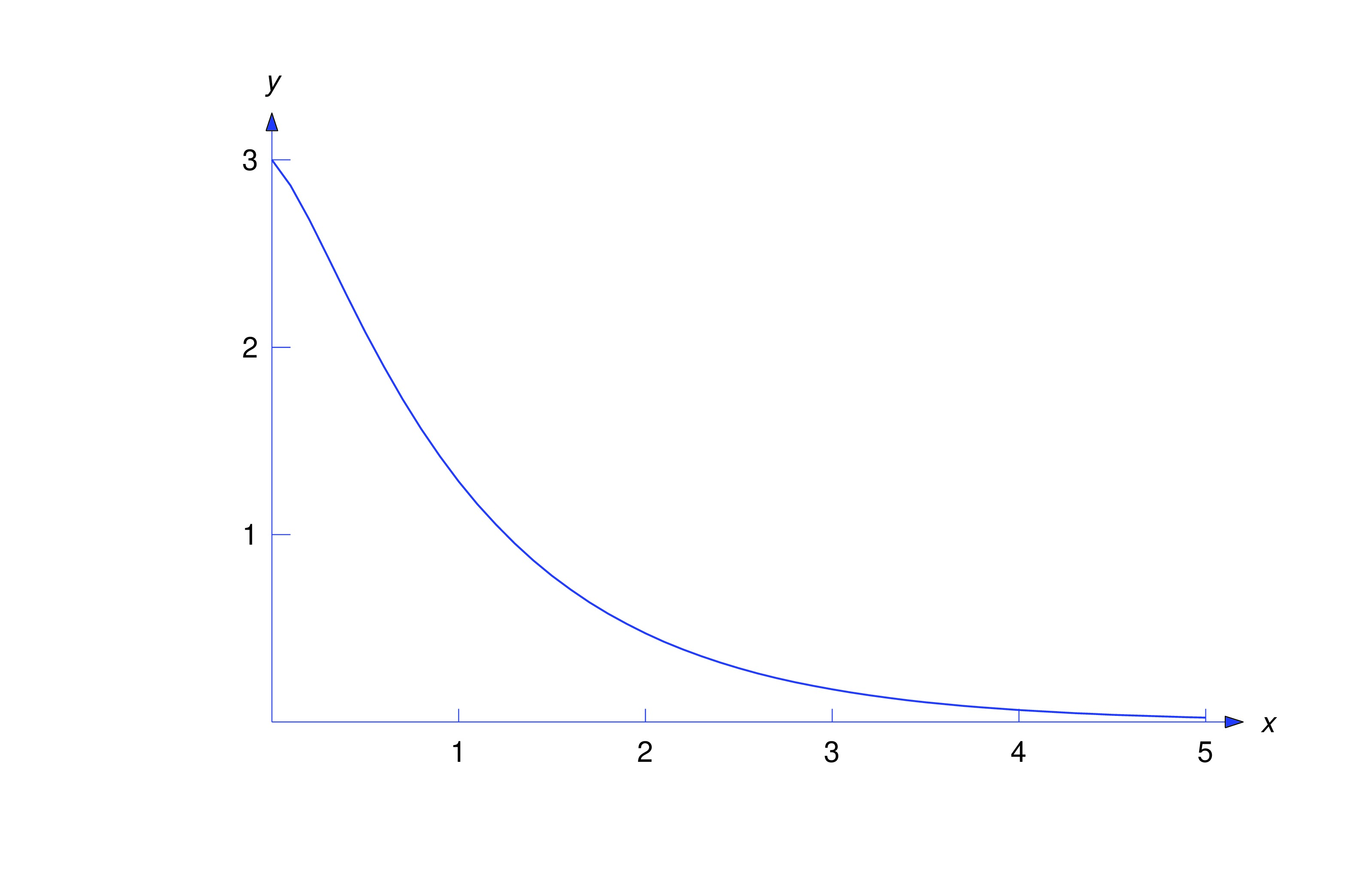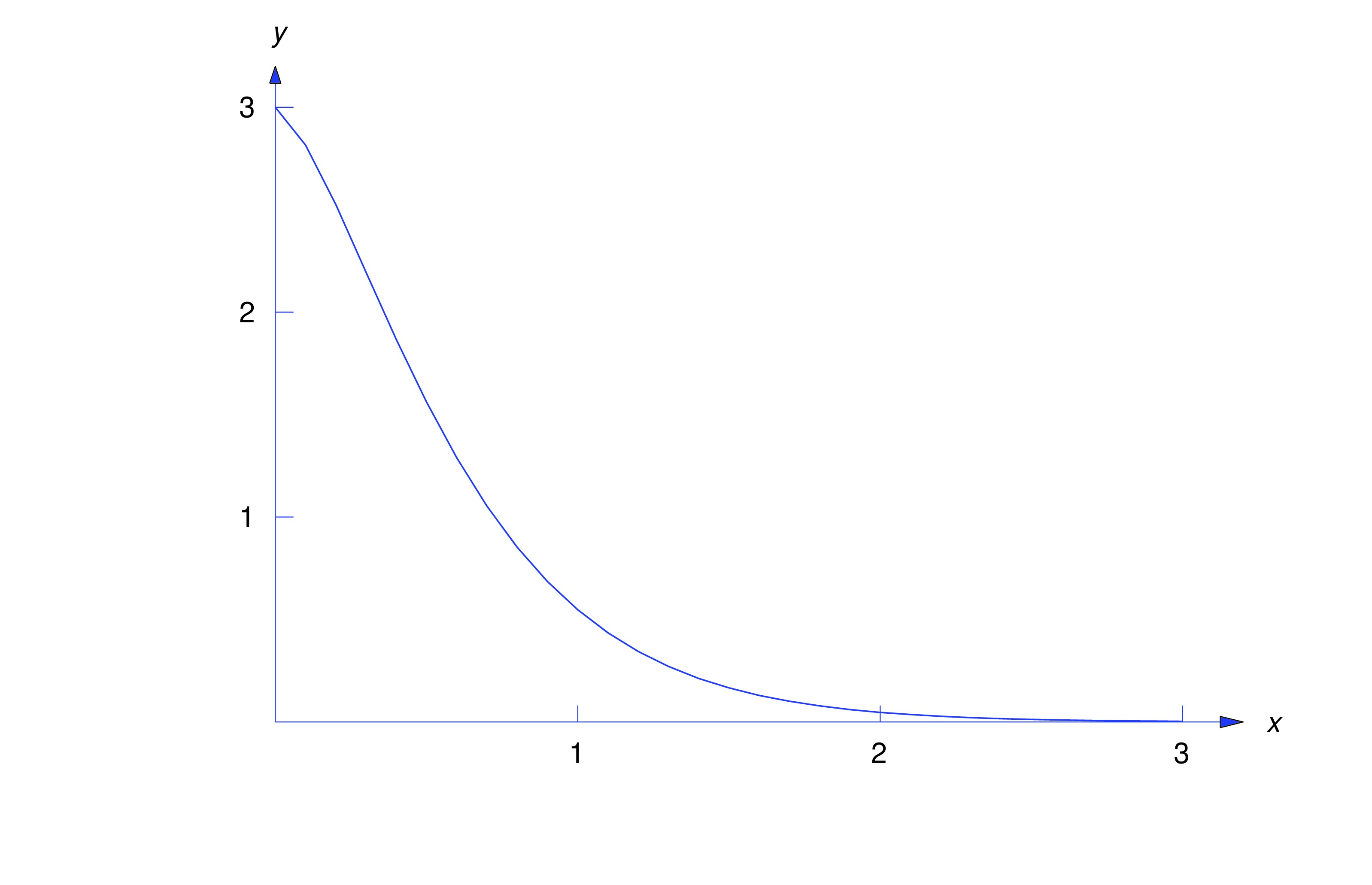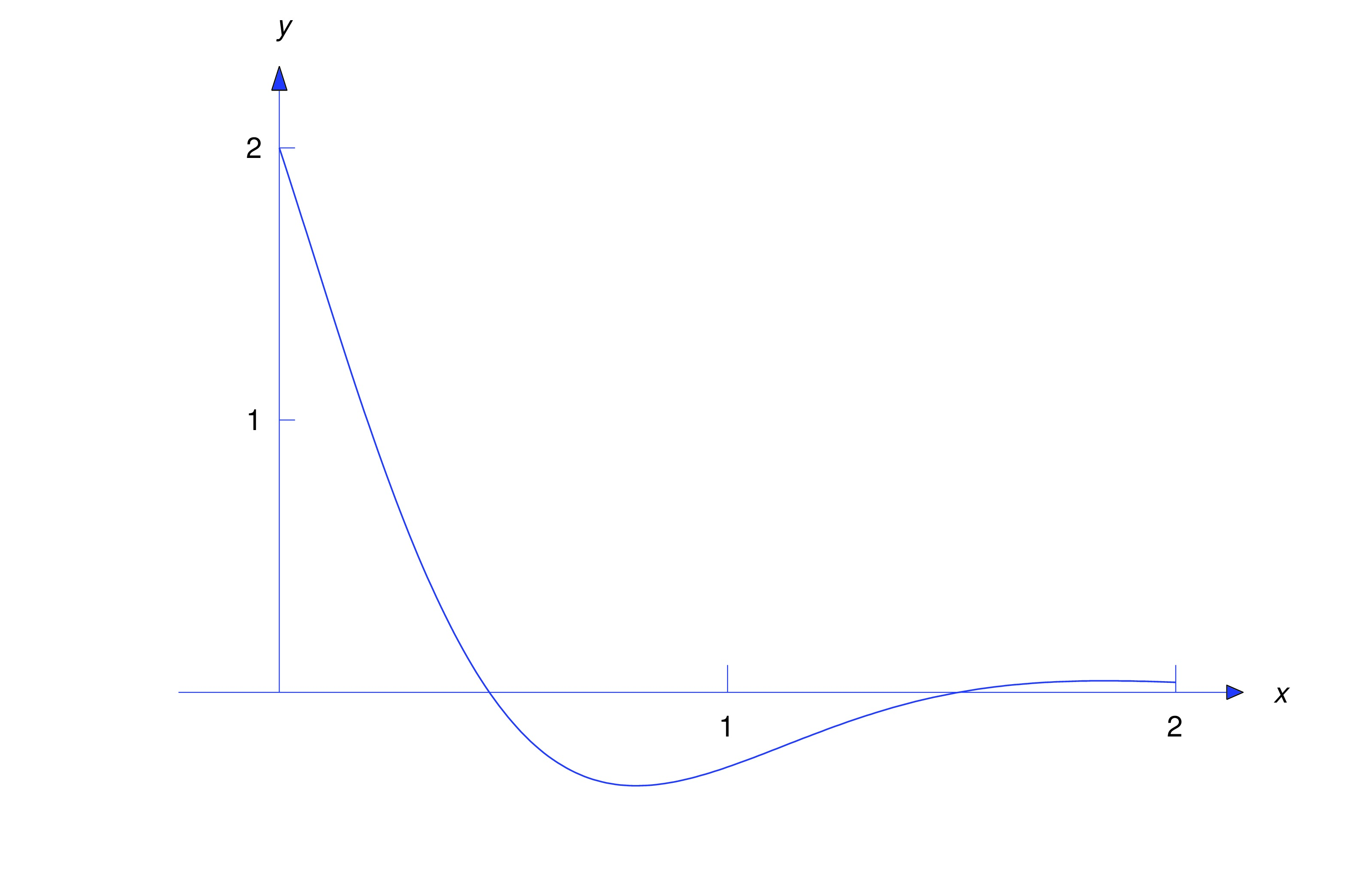We examine the various possibilities for types of solutions when solving constant coefficient homogeneous equations.
Constant Coefficient Homogeneous Equations
If , and are real constants and , then is said to be a constant coefficient equation. In this section we consider the homogeneous constant coefficient equation
As we’ll see, all solutions of (eq:5.2.1) are defined on . This being the case, we’ll omit references to the interval on which solutions are defined, or on which a given set of solutions is a fundamental set, etc., since the interval will always be .The key to solving (eq:5.2.1) is that if where is a constant then the left side of (eq:5.2.1) is a multiple of ; thus, if then and , so
The quadratic polynomial is the characteristic polynomial of (eq:5.2.1), and is the characteristic equation. From (eq:5.2.2) we can see that is a solution of (eq:5.2.1) if and only if .The roots of the characteristic equation are given by the quadratic formula
We consider three cases:Case 1. , so the characteristic equation has two distinct real roots.
Case 2. , so the characteristic equation has a repeated real root.
Case 3. , so the characteristic equation has complex roots.
In each case we’ll start with an example.
Case 1: Distinct Real Roots
item:5.2.1b We must determine and in (eq:5.2.6) so that satisfies the initial conditions in (eq:5.2.5). Differentiating (eq:5.2.6) yields
Imposing the initial conditions in (eq:5.2.6) and (eq:5.2.7) yields The solution of this system is . Therefore the solution of (eq:5.2.5) is the figure below is a graph of this solution.
If the characteristic equation has arbitrary distinct real roots and , then and are solutions of . Since is nonconstant, Theorem thmtype:5.1.6 implies that is a fundamental set of solutions of .
Case 2: A Repeated Real Root
If , then so
item:5.2.2b Differentiating (eq:5.2.10) yields
Imposing the initial conditions in (eq:5.2.10) and (eq:5.2.11) yields and , so . Therefore the solution of (eq:5.2.9) is The figure below is a graph of this solution.
If the characteristic equation of has an arbitrary repeated root , the characteristic polynomial must be Therefore which implies that and . Therefore can be written as . Since this equation has the same solutions as
Since , t is a solution of , and therefore of (eq:5.2.12). Proceeding as in Example example:5.2.2, we look for other solutions of (eq:5.2.12) of the form ; then so
Case 3: Complex Conjugate Roots
item:5.2.3b Imposing the condition in (eq:5.2.16) shows that . Differentiating (eq:5.2.16) yields and imposing the initial condition here yields , so . Therefore the solution of (eq:5.2.15) is The figure below is a graph of this function.

Now suppose the characteristic equation of has arbitrary complex roots; thus, and, from (eq:5.2.3), the roots are which we rewrite as
with Don’t memorize these formulas. Just remember that and are of the form (eq:5.2.17), where is an arbitrary real number and is positive; and are the real and imaginary parts, respectively, of . Similarly, and are the real and imaginary parts of . We say that and are complex conjugates, which means that they have the same real part and their imaginary parts have the same absolute values, but opposite signs.As in Example example:5.2.3, it’s reasonable to to expect that the solutions of are linear combinations of and . Again, the exponential notation suggests that so even though we haven’t defined and , it’s reasonable to expect that every linear combination of and can be written as , where depends upon . To determine we first observe that since and are the roots of the characteristic equation, must be of the form Therefore can be written as Since this equation has the same solutions as
To determine we note that if then Substituting these expressions into (eq:5.2.18) and dropping the common factor yields which simplifies to From Example example:5.1.2, the general solution of this equation is Therefore any function of the form is a solution of (eq:5.2.18). Letting and here yields the solution . Letting and yields a second solution . Since is nonconstant, so Theorem thmtype:5.1.6 implies that is a fundamental set of solutions of (eq:5.2.18), and (eq:5.2.19) is the general solution.The next theorem summarizes the results of this section.
- (a)
- If has distinct real roots and then the general solution of is
- (b)
- If has a repeated root then the general solution of is
- (c)
- If has complex conjugate roots and where then the general solution of is
Text Source
Trench, William F., ”Elementary Differential Equations” (2013). Faculty Authored and Edited Books & CDs. 8. (CC-BY-NC-SA)